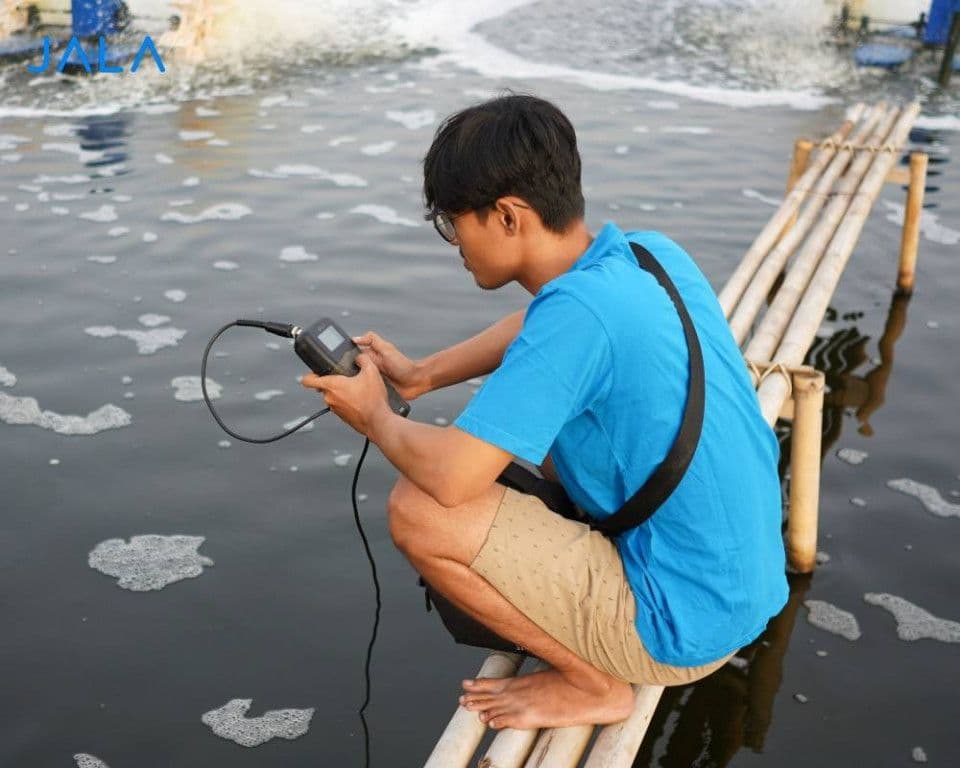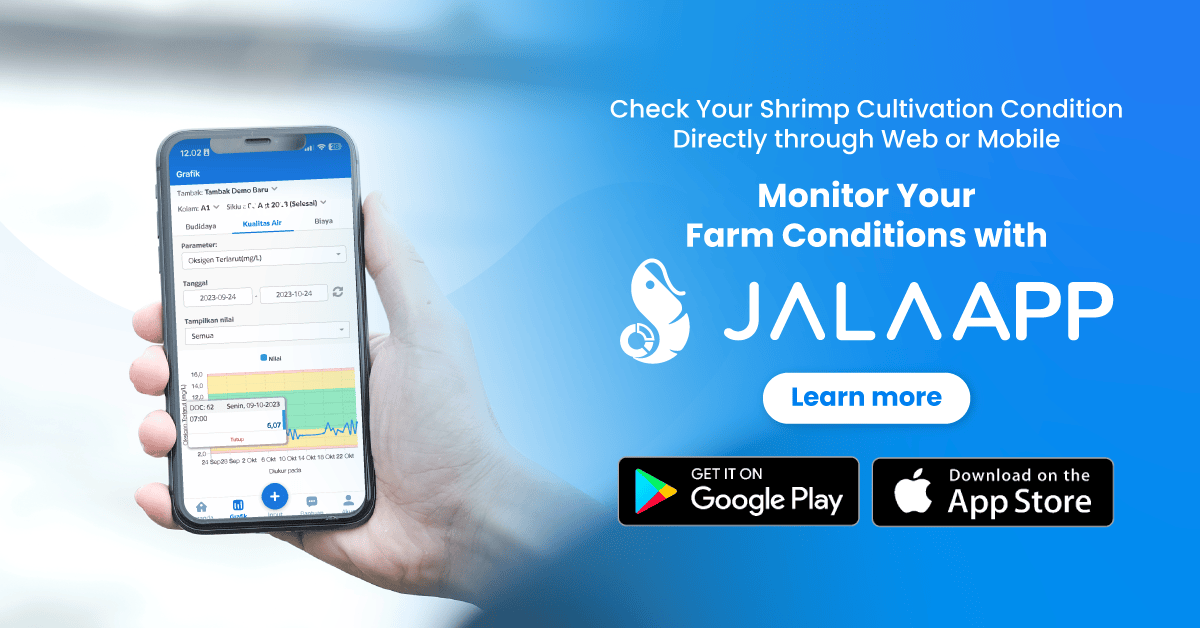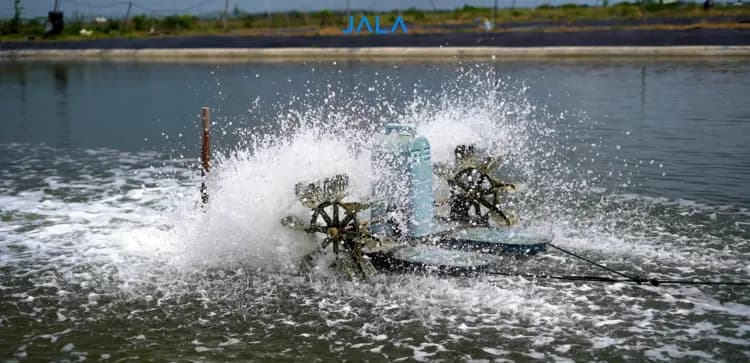
Water quality is a crucial aspect in shrimp farming. This aspect needs to be managed and maintained properly so that the shrimp grow healthily and free from disease. Prime water quality will also result in productive cultivation and minimize environmental damage. Regularly measuring water parameters is one method of managing and maintaining its quality.
Water quality parameters
There are various parameters of water quality in shrimp farming. Some of them are pH, temperature, dissolved oxygen (DO), salinity, phytoplankton, total bacteria, and organic matter. These water quality parameters affect each other.
Daily measurement of water quality parameters is performed to anticipate issues in farms, one of which is disease. The measurement results can later be useful information for farmers. These results can serve as a basis for farmers to make decisions for their cultivation.
Water quality measurement methods
At specific times every day, water quality measurements are taken routinely. However, farmers usually measure in the morning and the afternoon. In the morning, for example, farmers will start measuring between 5:00-6:00 AM where DO and pH are at their lowest. Meanwhile, in the afternoon around 12:00-02:00 PM, DO and pH reach their peak so measurements are taken again.
Each farmer implements a different method to measure water quality. Some farmers still rely on instinct or feelings. Some even perform measurement by tasting the water then estimate its condition. This method is not always accurate and even risky because we do not know what is contained in pond water.
Another method is to use a manual measurement device. These manual measurement devices often only accommodate one parameter, such as pH meter for pH, salinity meter (refractometer) for salinity, and thermometer for temperature. However, there are also measurement devices that can measure several parameters at once (multiparameter) hence farmers do not need to prepare many measurement devices. These measurement devices will produce parameter data in numbers.
For some parameters related to the concentration of compounds or the population of microorganisms, measurements are performed by taking samples of pond water or sediment to be tested in the laboratory. Measurements by this method are usually done weekly in commercial laboratories.
As technology advances, IoT-based (Internet of Things) measurement devices are starting to be developed and becoming the choice of farmers. Farmers can access measurement data from this device anytime and anywhere. This way of operation will make it easier for farm owners who live distant from their farms to monitor the water quality in their farms in real time.
Of the various existing methods, better choose a method that will result in the most accurate data. Accurate parameter data will provide valuable insight into pond water quality. Measurements should also be performed routinely. After taking measurements, analysis of the measurement data is equally crucial. This aims to learn about the conditions of water before finally making the right decision.
The good news is, JALA App is #HeretoHelp you monitor and analyze your water quality parameter data. By recording data regularly, you can get valuable insight about your water quality conditions.
What are you waiting for? Let's start cultivating with JALA App! Access the app through app.jala.tech or download it at Google Play Store or App Store.

References
Budidaya Udang = Budidaya Air | Kabar Udang
Pentingnya Memahami Kualitas Air dan Manajemennya | Kabar Udang





